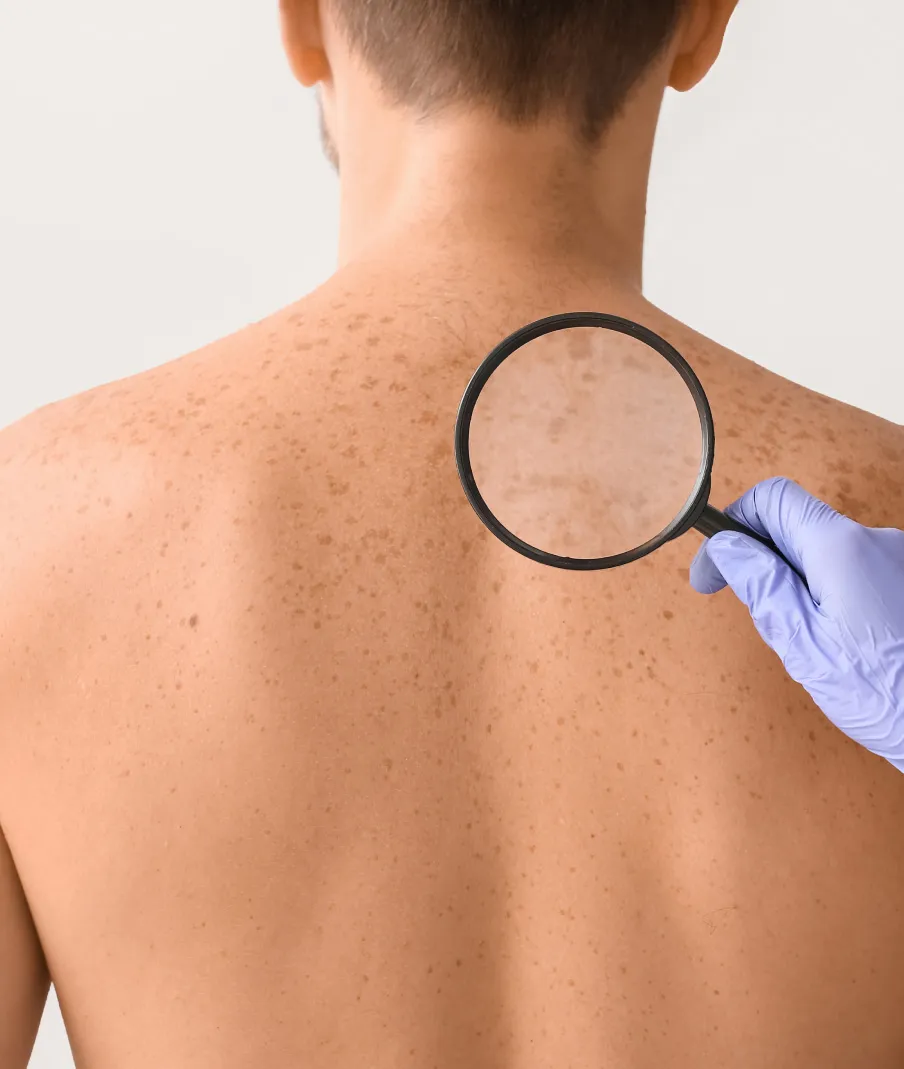
Skin Cancer Treatment
4.99
3k+


4.99
3k+


Our skin is the body's largest organ and it has several layers. Skin cancer begins in the epidermis, which is made up of squamous cells (top layer), and can then reach down into the basal cells (under squamous cells) and melanocytes (pigment cells). Anyone can get skin cancer, and it can occur anywhere on the body, primarily on areas of the skin that have been overexposed to ultraviolet light, such as the sun, tanning beds and sun lamps.
It's important to keep an eye on any emerging or new spots or bumps on your skin that are different in shape, color, size or feel. If there are any spots or bumps on your skin that itch, bleed, crust or ooze, or you notice any unusual or suspicious marks on your skin, please give us a call and set up an appointment for further evaluation. After all, it's your skin, and you should protect it.
To determine if you have skin cancer, we will examine the affected area. If it looks like it could be cancerous, we'll move forward with removing a sample for further testing. This process, called a skin biopsy, allows us to send your tissue to a lab to process. Microscopic diagnosis will determine if your tissue is benign (normal, non-cancerous) or malignant (cancerous). If cancerous, our expert skin cancer providers will diagnose the specific type of cancer and prescribe a customized treatment plan. We see and treat all types of skin cancers, including basal cell carcinoma, squamous cell carcinoma, melanoma, Merkel cell carcinoma, dermatofibrosarcoma protuberans (DFSP), and sebaceous cell carcinoma.
Our cancer team has specialized training and certification across skin cancer treatments including surgical excision, Mohs surgery, immunotherapy, targeted drug therapy, chemotherapy, and radiation therapy.

In addition to your annual skin check with one of our board certified providers, you can perform regular self-exams using the ABCDE method. Schedule an appointment right away if a spot or mole has:
An asymmetrical shape in a mole may indicate potential melanoma; consult a dermatologist for evaluation.
Irregular borders in a mole can signal skin cancer risk; seek medical attention for assessment.
Varying colors within a mole may suggest melanoma development; monitor changes and consult a dermatologist.
Moles larger than a pencil eraser may warrant medical review to rule out skin cancer concerns.
Changes in size, shape, or color of a mole from prior exams require immediate dermatological evaluation.
You can limit your risk of developing skin cancer by minimizing your exposure to the sun and protecting your skin from UV rays. And while we know the sun is fun, it can also be harmful. Damage from the sun can accumulate all year round in Michigan - even in the cold of winter. Be sure to use SPF 30+ sunscreen and limit your time in those harmful rays.

4.99
3k+

 Even the pros trust us!
•
Official Dermatologist of the Detroit Red Wings.
Even the pros trust us!
•
Official Dermatologist of the Detroit Red Wings.
 Even the pros trust us!
•
Official Dermatologist of the Detroit Red Wings.
Even the pros trust us!
•
Official Dermatologist of the Detroit Red Wings.
 Even the pros trust us!
Even the pros trust us!
Official Dermatologist of the Detroit Red Wings.

Even the pros trust us!